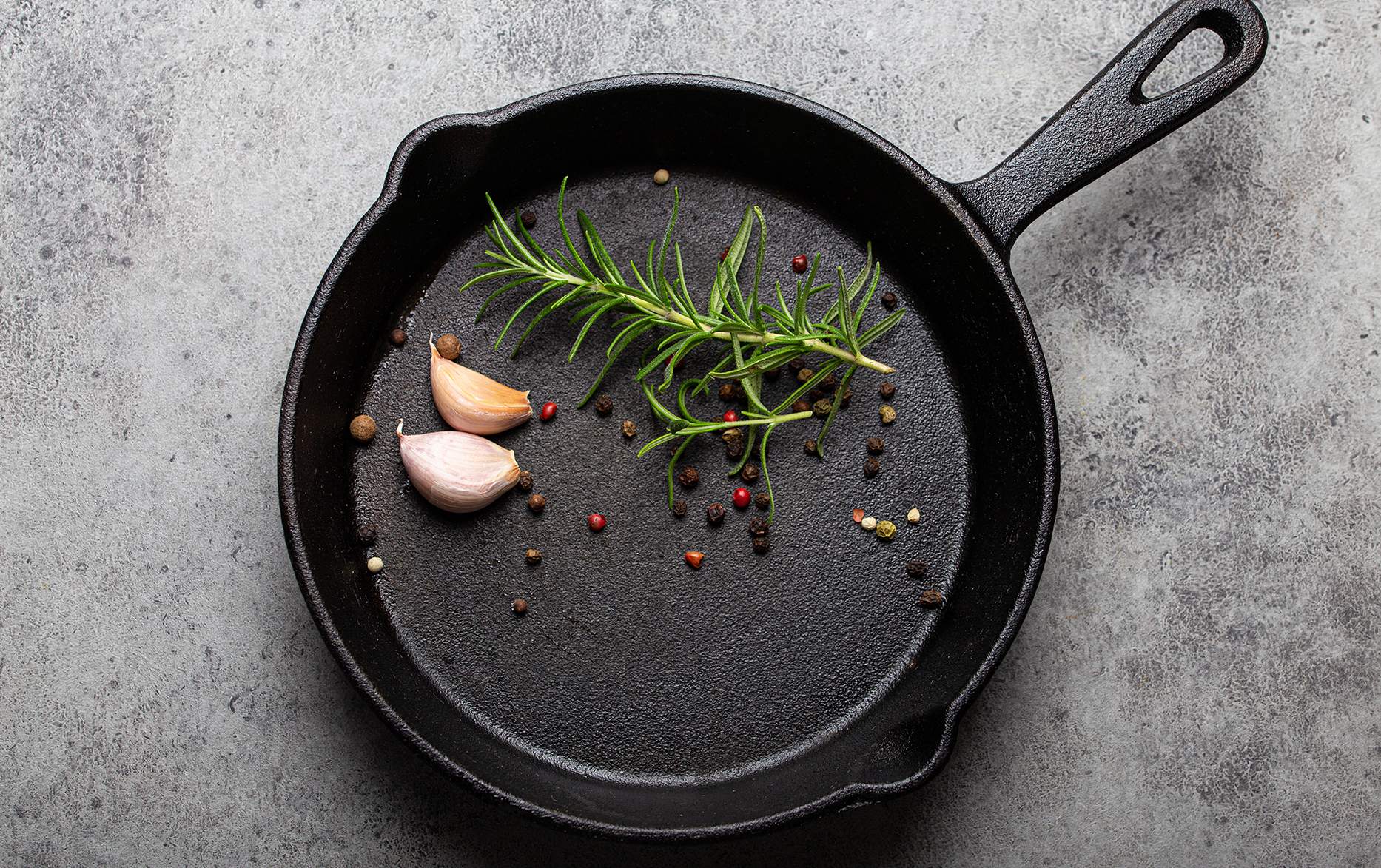

Your beloved cast iron cookware heats evenly, can go from the stovetop to the oven and back again, and is naturally nonstick – that is, if it's properly cared for.
Cast iron cookware is handled differently than other nonstick cookware. It can be easily wiped clean, so you don't need to scrub with soapy water or throw it in the dishwasher. However, there will come a time when your cast iron pots and pans will need to be deep cleaned and then re-seasoned. Perhaps you've cooked a delicious fish meal one week, and want to make eggs for the family the next. When you don't want those flavors mixing, or when your cast iron starts to look dull, break out the Simple Green All-Purpose Cleaner.
What makes cast iron unique is the ability to create a hard, black, nonstick layer that gives it a shiny appearance, called the patina. This type of iron is so porous that fats cooked in it fill in the pores and seal the surface. "Seasoning" is the process that creates this layer, prevents the pan from rusting, and makes it nonstick. Over time, the fats and oils from the food you cook using your cast iron will form that seasoning, enhancing the flavor and complexity of taste in your food.
Since it's so important that this layer of fats remain on the pan, how should you clean and reuse it? If you clean your cast iron while it's still warm after cooking, a quick wipe with a cloth or paper towel may be the only cleaning you need to do. To get rid of stuck-on food, it's best to boil some water in the cookware or lightly scrub the surface with coarse salt to loosen it. If necessary, use a stiff brush for scrubbing, as long as the bristles aren't metal or abrasive, as those will cut into your seasoned surface.
If you do use water to clean your cast iron, it is imperative that you dry it immediately to prevent rusting. The right choice of cleaners is important as well. Simple Green All-Purpose Cleaner is great for this cleaning job, because it wont corrode the metal you're cleaning.
After you've cleaned your cookware, it's a good idea to coat it with a very thin layer of oil and rub it in using a paper towel or cloth before storing it. This will help to protect the metal and maintain its nonstick surface. You can also line your cast iron with a paper towel to keep it dry and rust-free when not being used.
Lye solutions are often recommended for deep cleaning cast iron surfaces. However, lye is extremely corrosive and can cause chemical burns, permanent injuries, scarring and blindness.
Seasoning New Cast Iron Cookware or Re-Seasoning After Cleaning
Re-seasoning your pan to bring back the cast iron's luster is as easy as oil and bake.